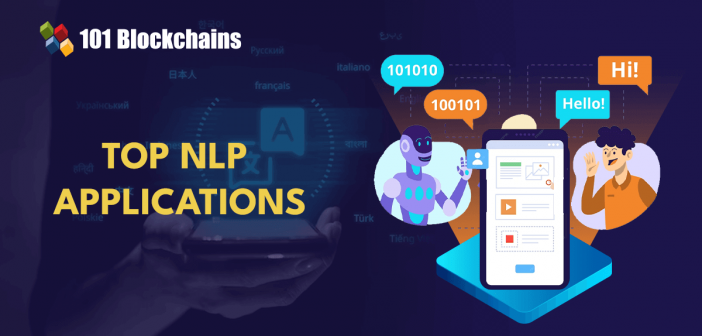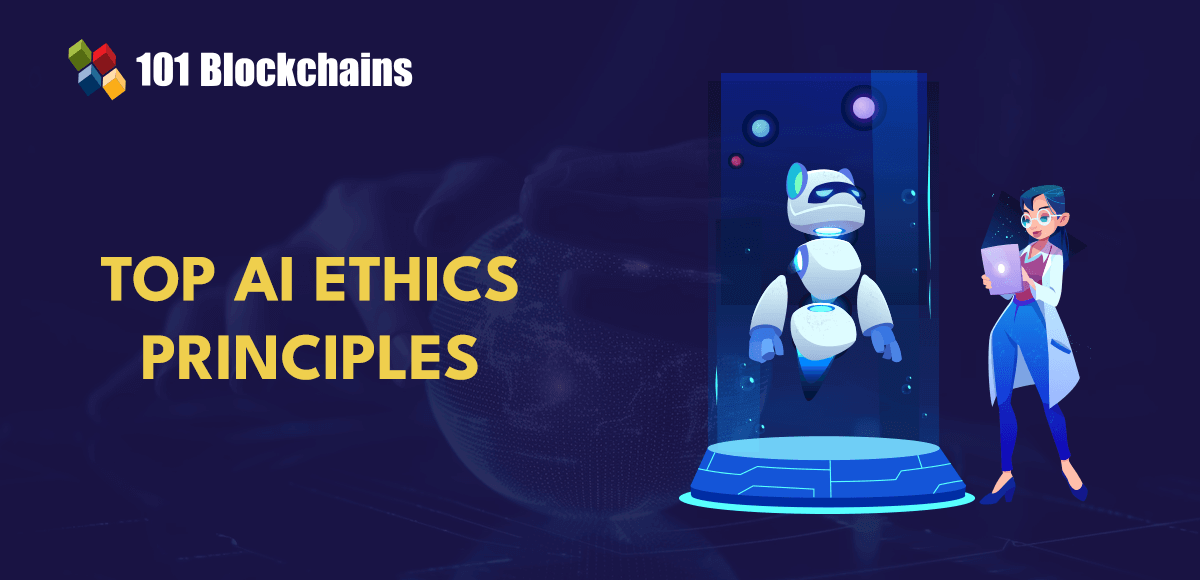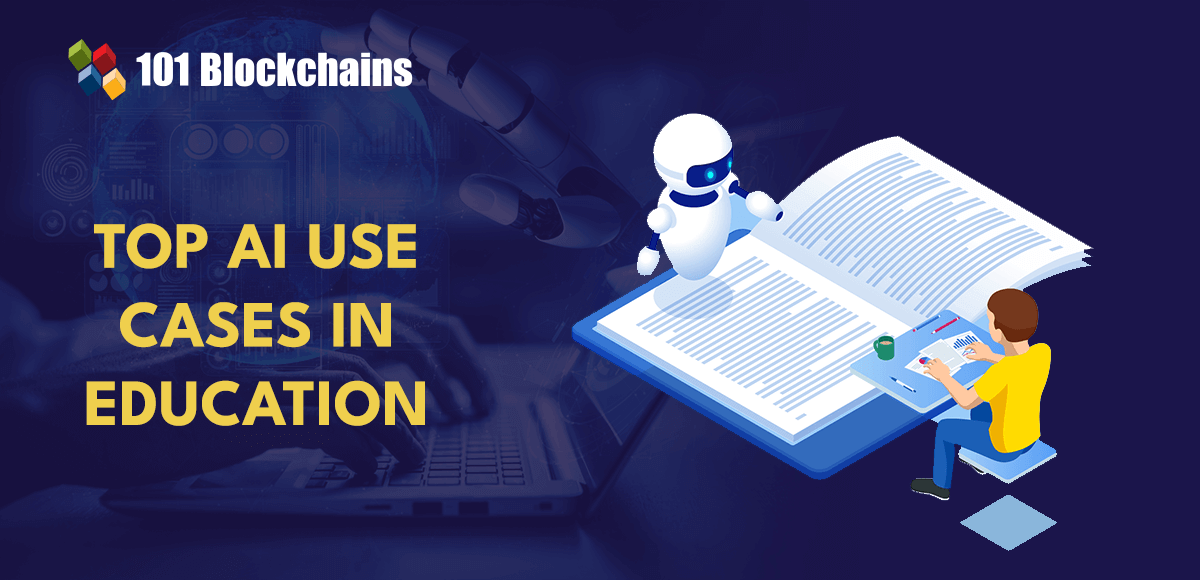Language is an important component of the human civilization. It is the primary medium for communication and exchanging ideas with each other. Over the course of time, language has emerged as a major component in books, songs, films, text messages, emails, and, most recently, as virtual assistants. Don’t you love how Alexa promptly responds to your requests for playing your favorite songs? The magic ingredient for Alexa is natural language processing or NLP.
As a matter of fact, it is one of the top NLP applications that use speech recognition to understand user queries and requests. Why do you need NLP now? Analysts have pointed out that almost 80% to 90% of the data available today is in unstructured formats. Most of the information is present in the form of conversations on social media platforms and interactions with customer service representatives.
Companies want to rely on natural language processing applications to draw insights from the massive repositories of unstructured information. NLP focuses on improving the ability of machines to understand and respond in natural language. Therefore, it can also provide new ways for transforming or personalizing user experiences. Let us learn more about the different types of NLP applications that could guarantee promising improvements for the productivity of businesses.
Want to develop an in-depth understanding of large language models and prompt engineering techniques? Enroll now in the Certified Prompt Engineering Expert (CPEE)™ Certification
What is NLP and How Does It Work?
The first thing required for understanding different NLP applications is the definition of NLP and a clear impression of its working mechanisms. You can understand how the applications of NLP work by identifying the different steps in the working of NLP algorithms. Natural language processing systems use machine learning to train computers to understand, process, translate, and respond to natural language. You can identify the importance of NLP in its ability to improve communication between machines and humans. Rather than breaking down sentences into different words, NLP can enable computers to understand the semantics and context of user statements.
You can explore a detailed description of the workings of NLP with a review of natural language processing tools and frameworks. Some of the popular NLP tools include Python Natural Language Toolkit and statistical machine learning models. You can use these tools to create new NLP applications tailored for specific tasks. On the other hand, you might have some doubts regarding how NLP systems work under the hood.
The examples of NLP applications in AI systems could create confusion for users in understanding the working mechanisms of NLP. How could NLP teach natural language to machines that understand nothing but ones and zeroes? On the contrary, machine learning has the power to train computers to understand natural language. A natural language processing algorithm works by following simple steps such as,
- User sends their service request to the machine through text message or voice.
- The machine would record the sound in the case of voice data and convert it into text.
- The NLP system divides the text into different components and interprets the context of the conversation alongside the intent of the user.
- According to the results of the NLP, the computer would determine the ideal command that should be used.
You can notice that the best NLP applications rely on similar algorithms capable of transforming words in the text into labels according to their position and function in a sentence. One of the prominent NLP techniques points to word embedding, which can help in resolving multiple NLP issues.
Word embedding could transform human language into numerical form. As a result, computers could easily identify the subtle nuances included in natural language, such as sarcasm. Word embedding focuses on transforming words into a set of numbers or an N-dimensional vector for storing information about the meaning of the concerned word.
Excited to learn about the fundamentals of Bard AI, its evolution, common tools, and business use cases? Enroll now in the Google Bard AI Course
Top Applications of Natural Language Processing
Natural language processing is an important subdomain of artificial intelligence that can help machines understand and process human language. The working mechanisms of natural language processing applications leverage computational linguistics alongside machine learning, statistical modeling, and deep learning. Most important of all, you must note that NLP could introduce promising business benefits.
Therefore, innovative developments in the domain of natural language processing could create opportunities for achieving more productivity. New NLP applications with diverse functionalities could help speed up business processes, improve customer relationships, and reduce monotonous tasks. Let us take a look at the top examples of NLP applications and how they could provide crucial advantages to businesses in different sectors.
-
Speech Recognition
The examples of Siri and Alexa provide a clear impression of the growing popularity of speech recognition. As a matter of fact, it is one of the top NLP applications that could transform user experiences. Voice recognition technology is not new, as scientists have been working on such solutions for decades. However, NLP has enabled better prospects for significant developments in speech recognition. Natural language processing has enabled the development of multiple speech recognition software systems for decoding the human voice.
The applications of speech recognition have proved successful in hands-free computing, video games, home automation, and virtual assistance. Interestingly, the method also helps to replace other forms of input, such as clicking, typing, or selecting text. Speech recognition is one of the answers to “What are the common applications of NLP?” as it has become an important addition to various products. Voice assistants like Google Assistant, Siri, or Alexa use NLP to provide seamless conversations between humans and machines.
Want to understand the importance of ethics in AI, ethical frameworks, principles, and challenges? Enroll now in Ethics Of Artificial Intelligence (AI) Course
-
Information Extraction
Natural language processing could also serve as the ideal component for information extraction systems. Information extraction refers to the automatic extraction of structured data from semi-structured or unstructured machine language. The examples of natural language processing for information extraction could point to full-text extraction of internet content through entity extraction, clustering, fact extraction, relationship extraction, or text categorization.
Such types of NLP applications in AI could help businesses utilize every piece of information at their disposal. Most businesses take product decisions according to information from social media, the news, and on the internet. However, it is important to note the difficulties in obtaining structured and valuable information from such sources. You can find such content in the form of images, infographics, and text. Natural language processing can help in using this content as input for analysis and extraction of relevant information in desired formats for the decision-making process.
-
Text Classification
Text classification or text categorization is one of the sub-tasks involved in information extraction. It is one of the best NLP applications that helps you understand the potential of NLP. Text classification involves labeling of sentences, text reports, paragraphs, and other variants of unstructured text. The text classification applications of NLP could support use cases of natural language inference and sentiment analysis. Businesses can tap into the potential of text classification NLP solutions for improving different processes.
You can use text classification applications of natural language processing for sorting incoming messages. Appropriate classification of incoming messages could help in providing timely alerts about customer requests and promotional messages. In addition, text classification could also emerge as a powerful tool for improving lead scoring. On top of it, NLP could also help in classifying urgent user service requests according to priority.
Excited to learn about ChatGPT and other AI use cases? Enroll now in ChatGPT Fundamentals Course
-
Semantic Search
One of the most noticeable applications of natural language processing is semantic search. You must have noticed how the content consumption behavior of internet users has changed in the last decade. People could easily search for information on their smartphones and find easy answers to complex questions within seconds.
How can natural language processing tools improve search capabilities? You must notice that the accuracy of search results has been questioned in recent times. Therefore, the best search engines use natural language processing technology for delivering ‘smart’ search results.
The ‘smart’ search results imply that search engines look for semantics in user queries. Natural language processing ensures that search engines provide the information sought by users rather than forcing them to browse through all the results. Semantic search engines could be accessible through browsers, e-commerce platforms, and smartphones. In addition, mobile applications, as well as corporate systems such as CRMs, could also utilize NLP for facilitating semantic search.
-
Market Intelligence
Marketing professionals can also leverage NLP to search for people who are most likely to purchase from the brand. You might wonder about questions like “What are the common applications of NLP?” and their relevance for market intelligence. The behavior of users on the internet, alongside activity on social media pages or search engine queries, could provide massive volumes of unstructured customer data. Marketing professionals could use NLP to learn more insights about their customers with each interaction.
You can find examples of NLP applications in AI for marketing intelligence with Seamless AI. It can help in finding the contact information of leads. On the other hand, you can also choose a service known as ML Analyzer, which offers text summarization benefits.
Want to learn about the fundamentals of AI and Fintech? Enroll now in the AI And Fintech Masterclass
-
Email Filters
The most popular example of email filters would obviously draw attention to the spam filter. Spam is responsible for around 85% of the global email traffic, thereby implying the necessity of email filters. How can the applications of NLP serve email filters? You must have noticed how email filters have evolved over the years to help you maintain an organized inbox. For example, Gmail offers different categories for organizing your emails, such as primary, promotions, updates, and social.
Natural language processing works as the core element of these email filters. When you receive emails in the inbox, NLP techniques such as keyword extraction and text classification help in scanning the emails automatically.
-
Language Translation
The list of NLP applications would also point towards language translation. It is important to note that language translation is one of the top NLP applications as it can bridge the gaps in communication. Online translators utilize NLP for translating language with better accuracy and ensuring grammatical correctness.
It is important to note that different languages do not support direct translation and could have different arrangements of sentence structure. Natural language processing could remove the barriers to semantic understanding of different languages to facilitate effective translation.
Understand the true potential of generative AI and become an expert with the Generative AI skill path
-
Chatbots
You could not compile a list of best NLP applications without mentioning chatbots. As a matter of fact, NLP has emerged as a formidable tool for creating semantic chatbots. The primary objective of using NLP for chatbots is to ensure accurate and relevant responses to customer queries.
Chatbots are accessible through the web or apps and messenger platforms. Businesses can leverage the power of NLP in chatbots for personalizing their communications with customers. Subsequently, the improvement in customer service could lead to better opportunities for ensuring customer satisfaction.
-
Sentiment Analysis
Another noticeable application of natural language processing is sentiment analysis. It is the ideal answer to “What are the common applications of NLP?” and focuses on evaluation of people’s opinions of a specific subject or product. Businesses can use sentiment analysis to find out how their customers feel about their products and services. In addition, it is an effective tool for leveraging NLP to extract insights from data submitted by users according to their will.
-
Auto-correction
The applications of NLP could also point to auto-correction, which helps in correcting errors in text. It works by flagging incorrect words which are not discovered in the dictionary. Subsequently, NLP makes the necessary edits in the typed word and compares the words to a dictionary. The NLP algorithm would help them calculate probabilities and identify the world that would most likely find its place in the final word.
Develop expert-level skills in prompt engineering with the Prompt Engineer Career Path
Final Words
The outline of the top NLP applications showcases the revolutionary potential of natural language processing. It is an important subdomain of AI focused on enabling semantic communication between humans and machines. NLP implies that computers should not only understand the words in text or speech data but also the context and emotions behind them.
Natural language processing powers some of the most crucial functions, such as speech recognition, text classification, sentiment analysis, and language translation. Learn more about the fundamentals of natural language processing and how it works with comprehensive training courses now.






